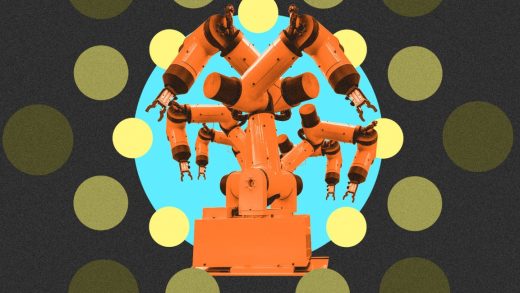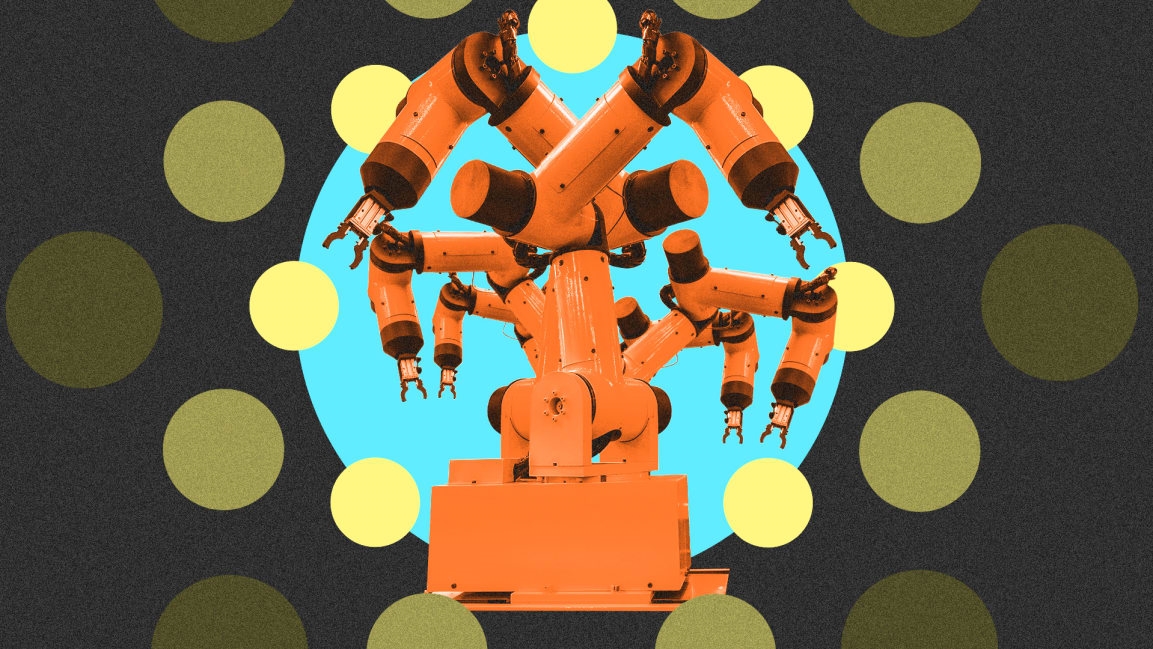Your new most annoying overachieving coworker is a robot
Imagine that you’re assigned a dull, repetitive task at work: moving inventory by forklift, say, or organizing files by date. Now imagine there’s a robot next to you with the same assignment, who’s much better and faster at doing what you’re supposed to be doing. How would that make you feel?
Probably not too great, according a team of academics at Cornell University and the Hebrew University of Jerusalem. In a new study, they found that when humans and robots work side-by-side at the same mundane task for pay, human productivity and self-esteem takes a hit. “This is one of the first studies to bring together economists and roboticists to look at this issue through the dual lens of robot-human interaction, which is my field, and behavioral economics,” says Cornell engineering professor Guy Hoffman, senior author on the report along with Ori Heffetz, economics professor at Cornell’s Samuel Curtis Johnson Graduate School of Management.
There’s a special urgency for insights into this subject. In December, workers at Amazon fulfillment centers pushed to unionize, saying: “We are not robots. We are human beings. We cannot come into work after only four hours of sleep and be expected to be fully energized and ready to work. That’s impossible.” At Amazon and many other companies, humans are feeling the pressure of being compared to their robot coworkers, which cannot tire, and which can perform mundane tasks on an unwavering autopilot that human laborers simply can’t maintain.
To examine just what kind of effect working alongside robots has on both human self-esteem and labor output, the researchers at Cornell and Hebrew University set them up with a simple and tedious task to perform in competition for a monetary prize.
Presented with a string of 20 randomly generated characters, the humans and robots had to count the number of times the letter G appeared throughout. Once they had a count, they had to drop a block in physical bin labeled with the corresponding number. So if they counted 5 Gs, they’d throw a block into the bin labeled 5, before moving on to the next string. For each string they counted correctly, they’d get one point. Each competition round lasted two minutes, and whoever earned more points had a higher chance of winning the cash prize, which was determined by a lottery weighted in favor of the higher score.
It’s not hard to see how such a task might cause one’s (human) eyes to glaze over, and it’s simple enough for a miscount to elicit frustration. But robots can be programmed to excel at this task, and for an indefinite period of time. That, Hoffman says, “had a discouraging effect on humans, which is an economic term to describe exerting less effort on a task in certain circumstances.”
“Once the robots got really good, their performance discouraged people from working harder,” Hoffman says. People also started to use more self-deprecating words to describe their own work, even if their own standard of work remained constant. And even though the human participants scored the robots’ competence higher as they improved at the task, they also indicated that they liked the robots less as a result.
The threat economists often talk about when they talk about the forthcoming impact of automation on the workforce is the loss of jobs. That’s certainly valid, but Hoffman and Heffertz’s research points to a more immediate concern: How the presence of robots in workspaces now impacts the productivity and emotional well-being of the human staff. It might not be the worst idea for managers to avoid competition or direct-comparison scenarios in the workplace to keep the peace between the two merging labor forces. “The design of automation and robotics into our society is not just a question of how much work can be done and at what rate,” Hoffman says. “It’s a question of effects on people’s lives and how we can make better decisions for people.”
(16)



